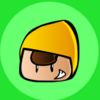This is a pretty loaded question. I recommend starting small first and checking out the forums for help. After you have a handle on the basics, you’ll be better suited to jump in.
I haven’t played a Mario Maker game, but I imagine the main components are a stage builder, playing created stages, and sharing (which you’ll be unable to do in the 3ds).
I find it easier for me to breakdown the main components of my game into a checklist and start coding from there. For your game, a breakdown might look like this
Stage builder
- map view to create maps
- sprite/event view for placements
- defined sprite behaviors associated with ID
- saving map and sprite/event information
Playing the stage
- loading the stage
- player controls
- how sprites or events modify the player
- stage completion/failure
This is a pretty simplified breakdown. I can say that it won’t be an easy task to create this game, but it has a lot of depth and code variance that it could be a good learning tool for some more advanced functions. You’ll need the basics first though.
How do I make a level editor in Smilebasic 3ds
As someone who has attempted making a maker game in PTC, here's some suggestions from my experience:
Similar to what @kitesinpowerlines said, separate it into two main chunks of code, for creating and playing. I'd suggest making the creating part first because it's easier (imo) and you can ignore physics and just focus on input and tools and stuff.
I would add a few details to the list above:
Stage builder
- map view to create maps
- sprite/event view for placements
- defined sprite behaviors associated with ID (this is mostly part of the gameplay)
- saving and loading map and sprite/event information
Playing the stage
- loading the stage (you might also want some sort of conversion from the save format to a more game-ready format)
- player controls
- player physics (this can be very tricky, but it's pretty important)
- how sprites or events modify the player (and how they modify each other)
- stage completion/failure
Things that it helps to think about in advance would also be things like your data formats - how are you going to store the map data, enemy/object/obstacle data, etc. And, consider just how much you want to include overall. I'd suggest aiming to build only a few simple things at first, but make it easy to add more if you want to later, that way you can control how complicated the final result is.
Also just be aware that this is almost certainly more complicated than you're expecting going into it. For example, when I attempted something like this it took me multiple years when I thought it would take a few months... you can do it, but it might be slower than you plan.

Hello this is Gulshan Negi
Well, creating a level editor in SmileBASIC 3DS involves setting up the basic structure of your project, designing the user interface, handling user input, creating level editing tools, implementing level data storage, handling saving and loading, providing visual feedback, and thoroughly testing and iterating on the functionality. By following these steps and utilizing SmileBASIC's features and documentation, you can create a level editor that allows users to create, edit, and save levels for their game or application.
I hope it is clear now.
Thanks

